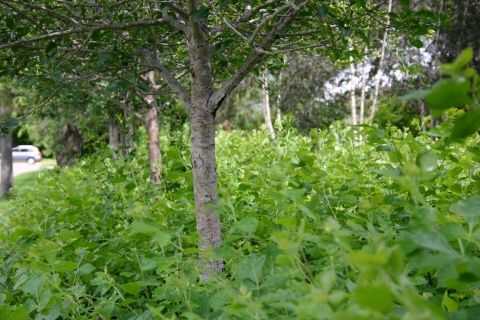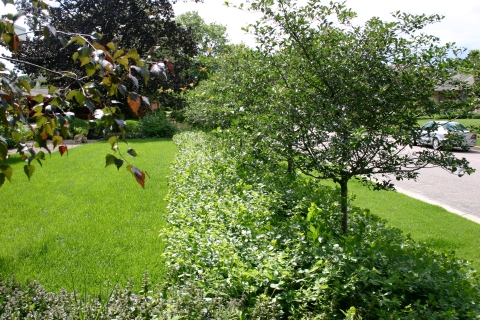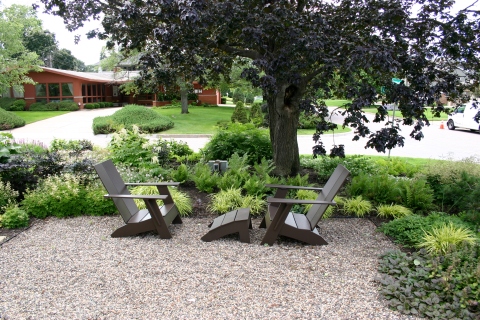The “Modern” Landscape?
March 29, 2011
I like to design spaces that rely on basic principles of balance and unity. I am not a big fan of fancy, voluptuous, flowery and cluttered. But I see signs of “modern” and “contemporary” design being co-opted, mass marketed and now becoming trite and boring. Often the result of a “modern” or “contemporary” application is not contextual.
I don’t think it’s enough to use simple materials and it’s not enough to use a limited palette. It’s not about a retro shape or figure. Most simple projects are also highly complex. I find that juxtaposing a complex arrangement of elements within a simple framework and setting up complex frameworks with monochromatic elements can bring a landscape to life. And I like mixing the two up.
Having a great love for plants helps me with this style. At my design firm in Minneapolis, Phillips Garden, we’ve been lucky enough to work on a full lot design/install over the past several years where we have experimented with our design philosophy. A new home was built on this site- it’s a contemporary design, (think Dwell Magazine), with strong horizontal lines. (I’ve blogged about this project before).
We were able to develop some very interesting beds with a great diversity of plant material in several parts of the yard. What connects and also separates these beds are long planes of rectilinear surfaces that serve as lawns, walkways, patios, a pool and so forth. The result is dynamic and inviting. It’s a landscape you want to explore and it reveals itself as one traverses through it. Many “modern” landscapes don’t offer such intrigue.
It’s a style that suits my love of plants, my love of Japanese Gardens and my love of simple, elegant lines. I’d like to work on more projects like this one!











